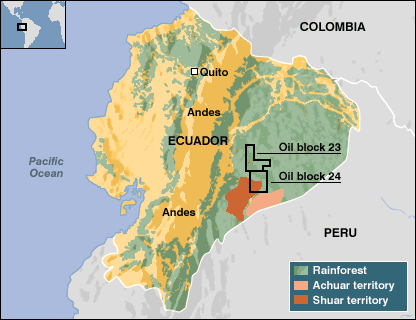Santiago Garcia (Ecuadorian Government), Rodrigo Sierra (Remote Sensing Expert)
Ecuador plays a very active role in the UNFF negotiations. Ecuador became the first country in receiving a grant amounting US$ 41.2 million to co-finance the implementation of Ecuador’s National REDD+ Action Plan. The Government of Ecuador is working as well with the World Bank and the forest products industry to promote timber plantations in the country. Currently 30% of the industrial timber used in the country comes from natural forests.
Net deforestation per year has significantly decreased in the last years from 0.65% in the period decade of 1990 to 2000 to 0.37% in 2008-2014. Transformation into other uses, specially agriculture has decreased in the last years since the 2000s as well. Two thirds of the deforested area are transformed into cattle ranching and approximately 12% into small scale agriculture. The historically highest deforestation rates took place in the 1960-1970s, favored by the government policies in support of colonization of the Amazonia.
 Rodrigo Sierra pointed out the strong relationship between the banana economy in the coast and the beef producers in the interior. Ecuador is the largest exporter of bananas in the World.The last decades have seen an increase in the rate of urbanization and a concentration of rural population in small towns situated along the roads.
The data from the last years suggest that deforestation is highly concentrated in certain areas. Statistical analysis points out that economic growth in the major urban centers like Quito or Guayaquil drives deforestation for the production of goods and services in the rural areas. The lowest deforestation levels in the country were seen after the year 2000 when the dollarization decreased the power purchase of the population and after the 2008 global economic crisis.
Rodrigo Sierra pointed out the strong relationship between the banana economy in the coast and the beef producers in the interior. Ecuador is the largest exporter of bananas in the World.The last decades have seen an increase in the rate of urbanization and a concentration of rural population in small towns situated along the roads.
The data from the last years suggest that deforestation is highly concentrated in certain areas. Statistical analysis points out that economic growth in the major urban centers like Quito or Guayaquil drives deforestation for the production of goods and services in the rural areas. The lowest deforestation levels in the country were seen after the year 2000 when the dollarization decreased the power purchase of the population and after the 2008 global economic crisis.
 Illegal mining is a major issue behind deforestation and forest degradation in the areas located close to the Colombian border. Palm oil plantations have already expanded in most of their suitable area in Ecuador so currently and in the future for their expansion they will require taking up the land from other uses like other crops or rangelands.
One of the major goals of Ecuador’s policy towards achieving zero deforestation by 2030 should be, according to the presenters, a diversification of the rural economy in Ecuador.]]>
Illegal mining is a major issue behind deforestation and forest degradation in the areas located close to the Colombian border. Palm oil plantations have already expanded in most of their suitable area in Ecuador so currently and in the future for their expansion they will require taking up the land from other uses like other crops or rangelands.
One of the major goals of Ecuador’s policy towards achieving zero deforestation by 2030 should be, according to the presenters, a diversification of the rural economy in Ecuador.]]>